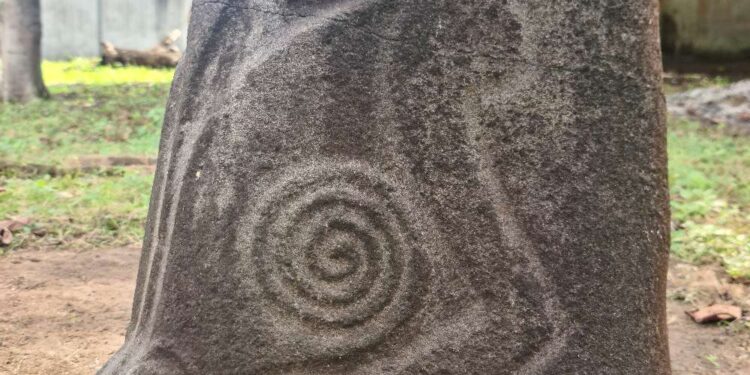By: Abdulsalam Omuya & Ekpe Nsa.
In our continuous efforts to uncover fascinating geo-sites across Nigeria, The Rock Post paid a scheduled visit to the open museum of mystical monoliths located in Ikom/ Boki Federal Constituency, Cross River State. The geological and tourism attractions here compelled us to delve into the cultural narratives behind these almost hypnotic, ancient fossils. These colorfully and deeply incised basaltic rock boulder left Ekpe and me both awed and fascinated. It is mind-blowing that 1,500 years ago, an age attributed to their creation, people without modern technological tools achieved such a remarkable feat of global acclaim. Their incredible story is uplifting.
Just read on.
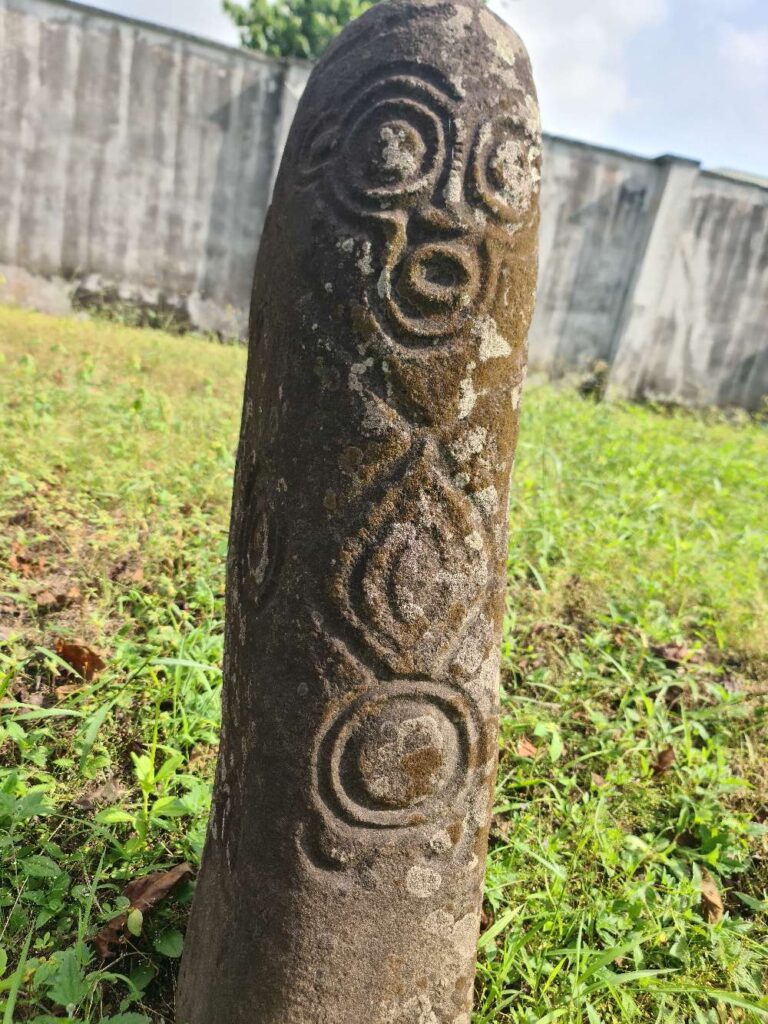
GEOLOGICAL, GEO-TOURISM SIGNIFICANCE
A monolith is a significant geological feature, typically a massive unit of stone or rock. These formations are often created by erosion, which gradually wear away the surrounding material, leaving behind the more resilient igneous or metamorphic rock. In this case, possibly have been fragmented by weathering forces, transported over considerable distances and smoothened by abrasion during the course of transportation. Essentially, a monolith is what remains after most of the original rock or mountain has eroded.
Carved Monoliths by the ancients have held humanity in Awe. From America, Europe, Asia and to Africa. These carved rock monoliths have remained mysterious, Intriguing and associated with several myths. From their shape, size and the intricate deep incisions it remains a marvel of wonder and are now referred to as Geoheritage sites-a generic but descriptive term applied to sites or areas of geological features with significant scientific, educational, cultural or geological aesthetic value.
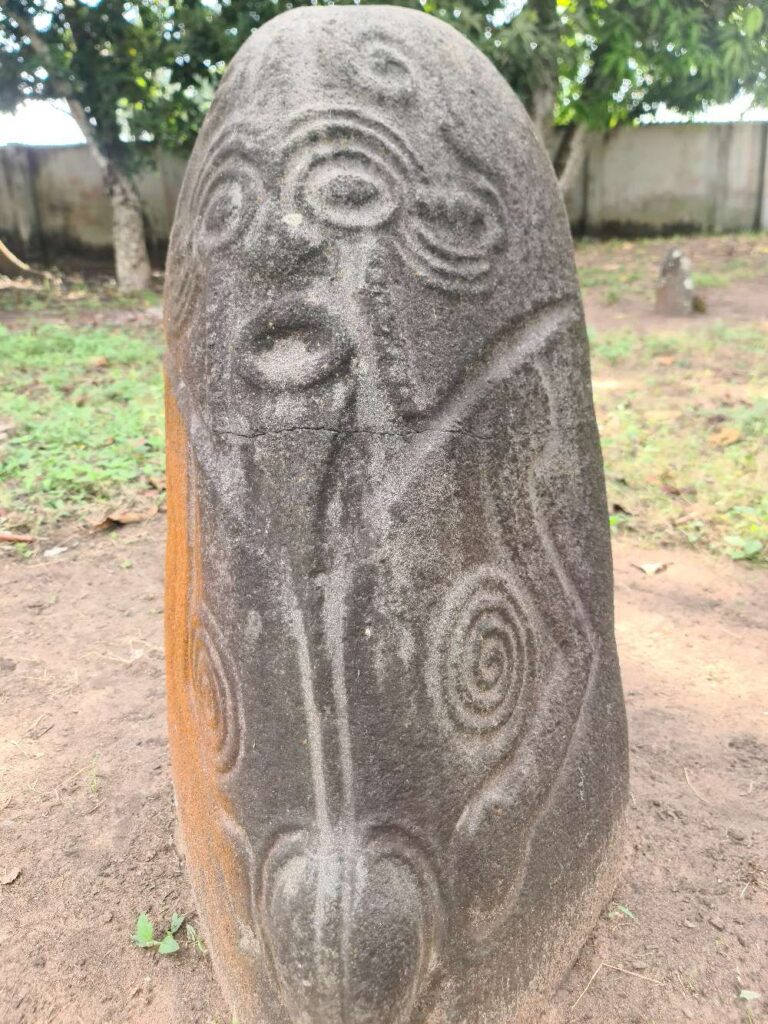
There are carved stones/monoliths scattered across different parts of Ikom, Cross-river state, Nigeria. These monoliths are commonly referred to as ‘Akwanshi’. The monoliths, originally numbering around 400-450 engraved standing stones, are distributed across approximately thirty communities in the Ikom district. These ancient stones are believed to be up to 1,500 years old, making them a vital part of Nigeria’s cultural, historical and geological heritage.
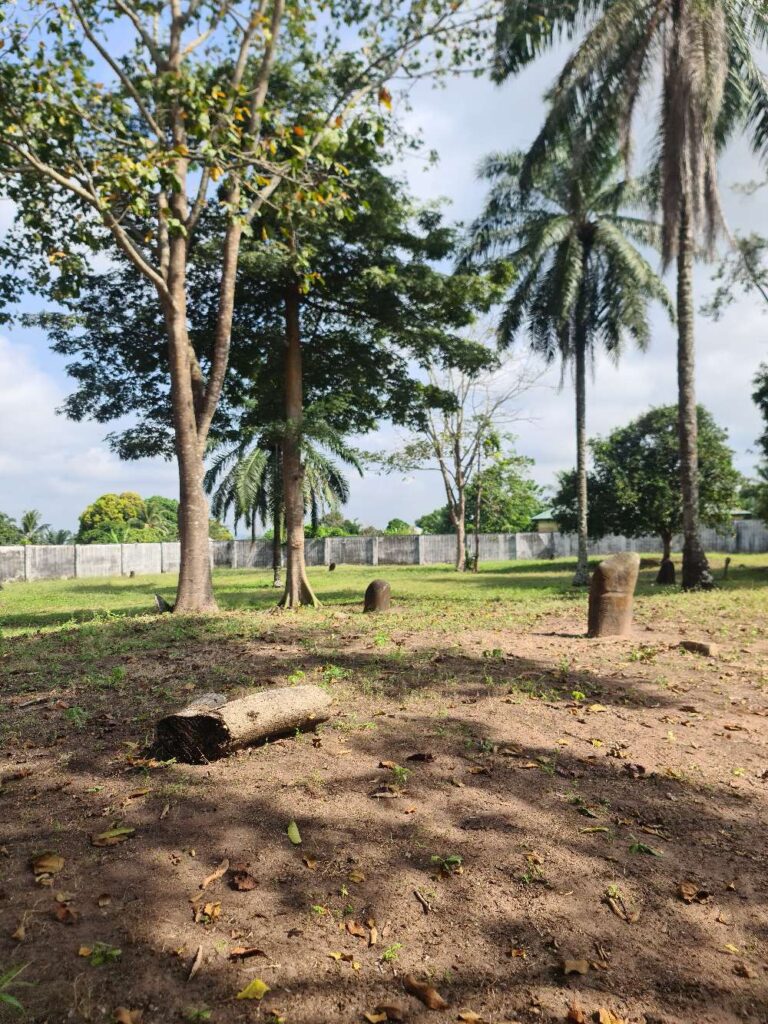
The monoliths are set amidst several small, traditional villages, providing a culturally rich and picturesque backdrop. These villages feature mud-brick homes with thatched or tin roofs, blending seamlessly with the lush tropical environment. The villages are nestled in a lush tropical environment characterized by dense forests, rolling hills and abundant wildlife. This natural beauty enhances the setting of the monoliths, creating a serene and scenic landscape.
The local economy includes artisanal crafts, small-scale trading, and increasingly, tourism. Visitors to the monoliths provide an additional source of income for the villagers, who often serve as guides and offer handmade crafts for sale.
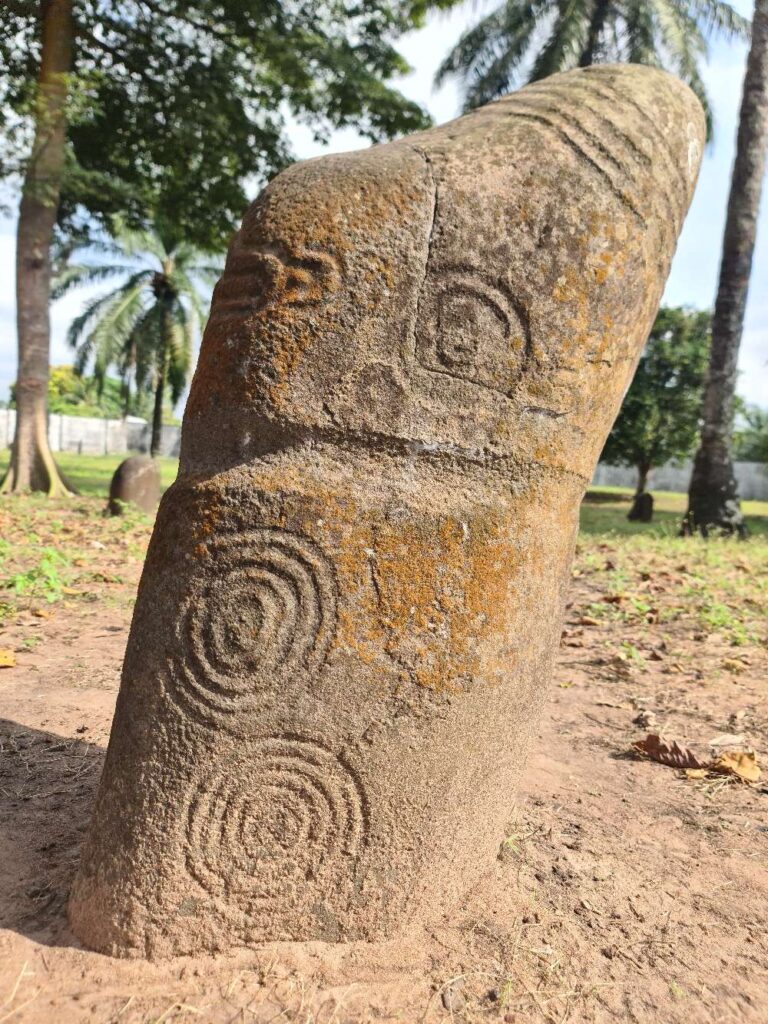
The monoliths face both nurturing and threatening elements. High humidity, heavy rainfall and intense heat shape this vibrant ecosystem but also pose significant risks to the ancient stones. The high humidity encourages moss and lichen growth; heavy rains cause soil erosion, while extreme heat can crack and weather the stones.
Local agricultural practices, such as brush burning, further threaten the monoliths by increasing fire risks and accelerating erosion. Despite these challenges, efforts to preserve them continue, recognizing their cultural and historical significance. Protecting these relics requires managing environmental impacts and involving the local community in conservation efforts.
FEATURES OF THE MUSEUM’S MONOLITHS
Alok Ikom Town is 40 kilometers from Ikom main Town and about 250 kilometers from Calabar, Cross River state capital.
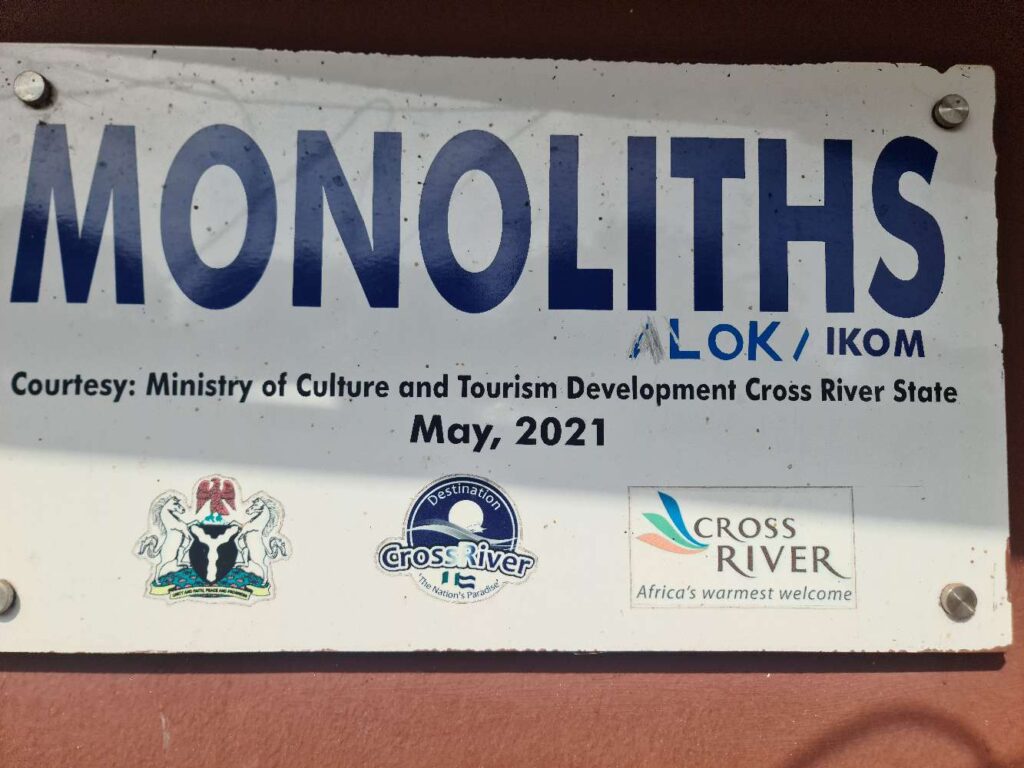
We arrived The Alok Museum after three- and half-hour drive from Calabar and we were met with the tour guide. The Alok museum is an open-air perimeter fenced museum arena with a built-up gallery and library hall. After the necessary introductions and brief history of the museum, the guide ushered us to the main open-air arena housing the monoliths with a view to exposing us to the monoliths
The monoliths share several striking features. They are carved in a phallic shape, standing between three to five and a half feet tall. Each monolith is adorned with carvings that depict geometric patterns and stylized human features. Notable details include two eyes, an open mouth, a head crowned with rings and a distinct pointed beard. They are carved from a single piece of rock and adorned with intricate designs. The consistency in their size and craftsmanship points to a high level of skill and intentional design.
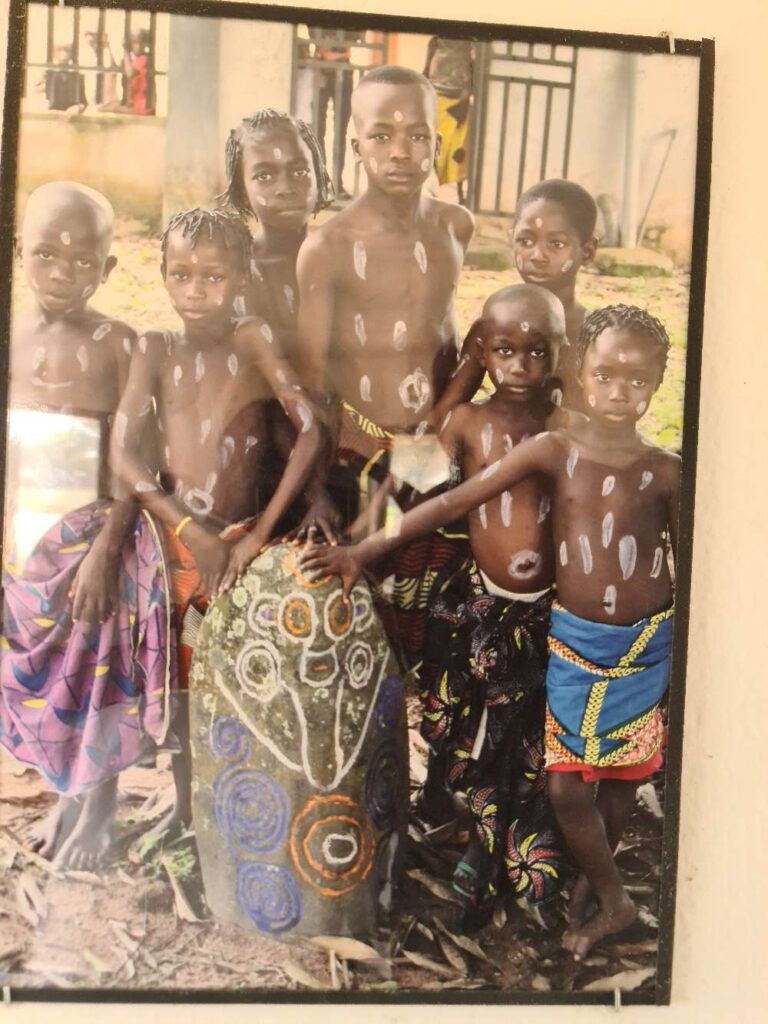
These elements combine to create a captivating and dramatic metaphor.
The monoliths with their geometric inscriptions could be compared to the rock Arts of Tanzania, the deer stones of Mongolia or the Moai statues of Rapanui, South America. The Drombey stone circle in Ireland, the Carnac stones in France and the Callanish stones in Scotland have quite similar attributes of the Cross- river monoliths as well They are similar in arrangement and ordering to the Stone circuits in the Gambia, but unique in their complexity of design and interpretation… Ikom monoliths could be West Africa’s answer to United Kingdom’s Stonehenge
MYTHS
The monoliths are steeped in fascinating myths. Local legends say these ancient stones are guardians, holding the spirits of ancestors who protect the land. It’s believed that the carvings on the monoliths can convey messages from the gods during rituals. Some tales abound of humans turned into stone as punishment, now standing as eternal sentinels. Others speak of the stones as gateways to other realms, opening during celestial events. The circular arrangement of the monoliths is said to be tied to ancient ceremonies believed to harness powerful energies. These enchanting stories add a layer of mystique to the Monoliths of Ikom, making them more than just historical artefacts.
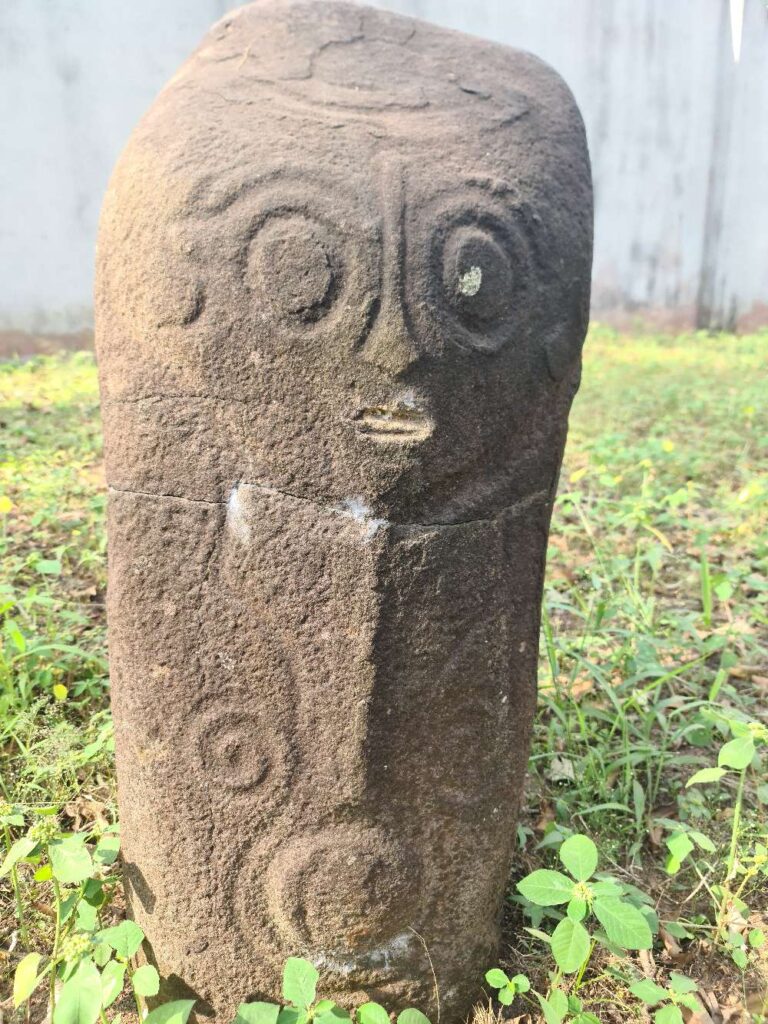
GALLERY
Our investigation of the monoliths of Ikom revealed contributions from prominent Cross River State indigenes and British scholars who have significantly advanced their research and preservation. Some of these indigenes include the late Prof. Ekpo Eyo and Dr. Abu Edet. Several British nationals have also studied these artifacts extensively, including P.A. Allison, H.L.M. Butcher, R. Harris, O.G.S. Crawford, L. Desplagnes, A.T.E. Marsh, R.N.O. Marshall, R. Mauny, C. Partridge, D. Westermann, M.A. Bryan, W. Plant, N.A.C. Weir and P.A. Talbert, R.G. Armstrong.
This museum is dedicated to the memory of Chief Sylvanus Orlando Akong, honoring his legacy as curator of the Alok Open Air Museum and champion of the Bakor Monoliths. Commissioned by John Picton in 1961/62, Philip Allison of the Nigerian Forestry Department documented nearly 300 monoliths, with a few displayed in the Lagos National Museum’s courtyard.
AND WE DEPARTED
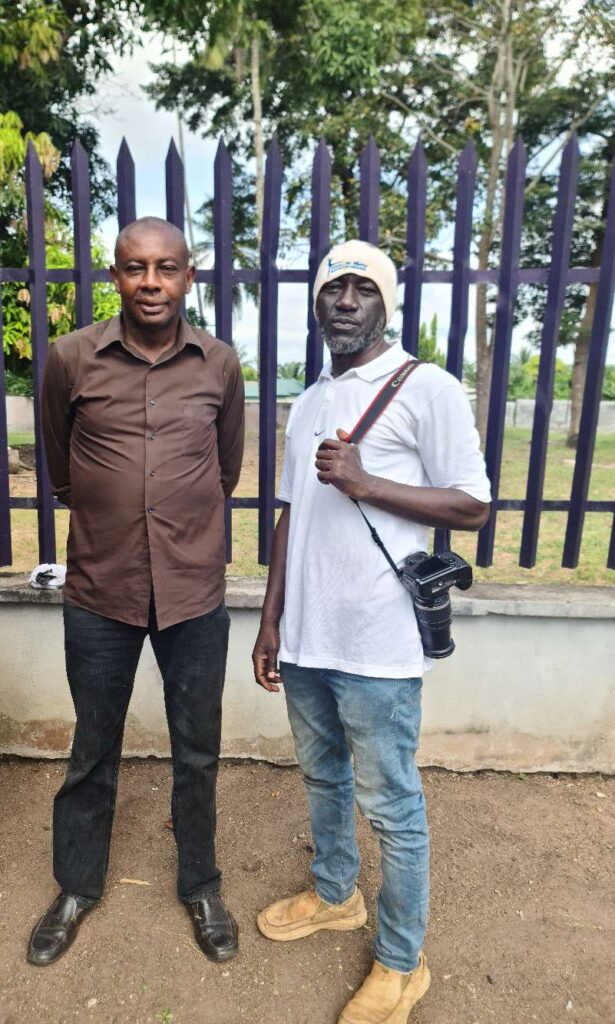
We departed with evergreen memories that Ikom Cross-river’s anthropomorphic monoliths stand in silence but speak volumes about the achievements of their creators. The monoliths can be said to represent the lost opportunities of the present generation to document and understand their past. This very rare indigenous technology may be lost forever. So many other observations remain a mystery.
For any inquiries or messages, please feel free to reach out to me via email @
omuyalooks@yahoo.com


